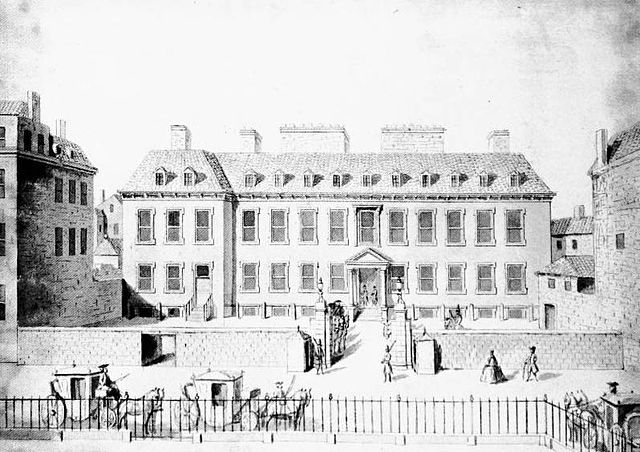The Leverian collection was a natural history and ethnographic collection assembled by Ashton Lever. It was noted for the content it acquired from the voyages of Captain James Cook. For three decades it was displayed in London, being broken up by auction in 1806.
The first public location of the collection was the Holophusikon, also known as the Leverian Museum, at Leicester House, on Leicester Square, from 1775 to 1786. After it passed from Lever's ownership, it was displayed for nearly twenty years more at the purpose-built Blackfriars Rotunda just across the Thames, sometimes called Parkinson's Museum for its subsequent owner, James Parkinson.
Interior view of Sir Ashton Lever's Museum, Leicester Square, London, 30 March 1785
Aquatint of exhibit of a stuffed hippopotamus from Charles Catton's Animals
Leverian Museum collection in the Rotunda. Engraving by William Skelton after Charles Reuben Ryley
Leicester House, Westminster
Leicester House was a large aristocratic townhouse in Westminster, London, to the north of where Leicester Square now is. Built by the Earl of Leicester and completed in 1635, it was later occupied by Elizabeth Stuart, a British princess and former Queen of Bohemia, and in the 1700s by the two successive Hanoverian princes of Wales.
Leicester House in an engraving of 1748
Leicester House & Fields
Elizabeth Stuart, who died in the house.
Frederick, Prince of Wales







